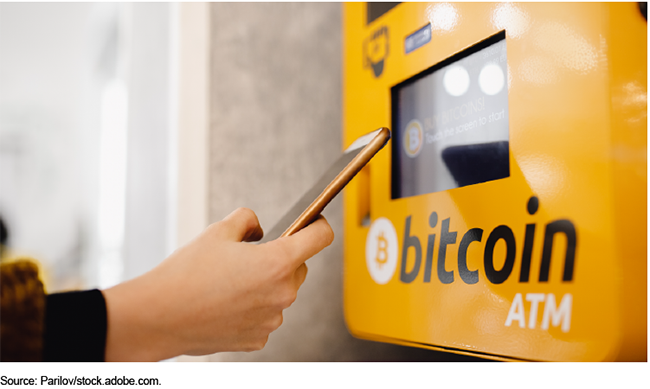Virtual Currencies: Additional Information Could Improve Federal Agency Efforts to Counter Human and Drug Trafficking [Reissued with Revisions Feb. 7, 2022]

What GAO Found
This is a public version of a sensitive report that GAO issued in September 2021. Therefore, this report omits sensitive information and data on selected federal agencies’ activities to counter human and drug trafficking, associated use of virtual currency, and related challenges.
Virtual currency is increasingly used illicitly to facilitate human and drug trafficking, according to GAO’s review of agency documentation and data and interviews with officials. For example, the number of suspicious activity reports filed with the Financial Crimes Enforcement Network (FinCEN) that involve virtual currency and drug trafficking increased fivefold (from 252 to almost 1,432) from calendar year 2017 to 2020. However, in a sensitive version of this report, GAO found that data from selected federal agencies on virtual currency use for human and drug trafficking may not be consistently captured. Consequently, agencies may lack complete data when assessing or reporting on the illicit use of virtual currency in human and drug trafficking. In that report GAO made nine recommendations to selected agencies to enhance their data collection practices.
Example of Virtual Currency Kiosk, Which May Be Used in Human and Drug Trafficking

Selected federal agencies have taken actions to counter the illicit use of virtual currency in human and drug trafficking but face challenges. For example, FinCEN and the Internal Revenue Service (IRS) oversee virtual currency entities. FinCEN imposes requirements for operators of virtual currency kiosks that are used to exchange virtual currencies for cash and are found in various locations such as convenience stores (see fig.). While kiosk operators are required to register with FinCEN, they are not required to routinely report the specific locations of their kiosks. This limits federal agencies’ ability to identify kiosks in areas that have been designated as high risk for financial crimes and could involve human and drug trafficking. Reviewing registration reporting requirements and taking appropriate action, as needed, to better identify individual kiosk locations by operator could help FinCEN and IRS identify high-risk kiosk operators to monitor for compliance, while also improving information law enforcement has available to identify potentially illicit transactions.
Why GAO Did This Study
Virtual currencies are an emerging payment method for transactions, such as retail purchases. Virtual currency’s anonymizing features can attract criminals’ use to avoid detection when paying for illicit activities, such as human and drug trafficking. Thus, policy makers, regulators, and law enforcement have identified virtual currency, human trafficking, and drug trafficking as priority areas of concern.
GAO was asked to review the use of virtual currency to facilitate sex and drug trafficking. This report examines (1) the use of virtual currency for human and drug trafficking and the extent to which U.S. agencies collect data on these topics; and (2) the extent to which U.S. agencies have taken steps to counter human and drug trafficking facilitated by virtual currency and challenges these agencies face. GAO analyzed data, reviewed documentation, and interviewed relevant officials at selected federal agencies.
Reissued with Revisions Feb. 7, 2022
On February 7, 2022, two sentences of this report were omitted from the background section to remove inaccurate information. The first sentence identified specific retailers who accept virtual currency (page 9). The second sentence quantified the volume of payment transactions processed on average per day in 2020 by the Federal Reserve Banks’ Automated Clearing House (page 13).



